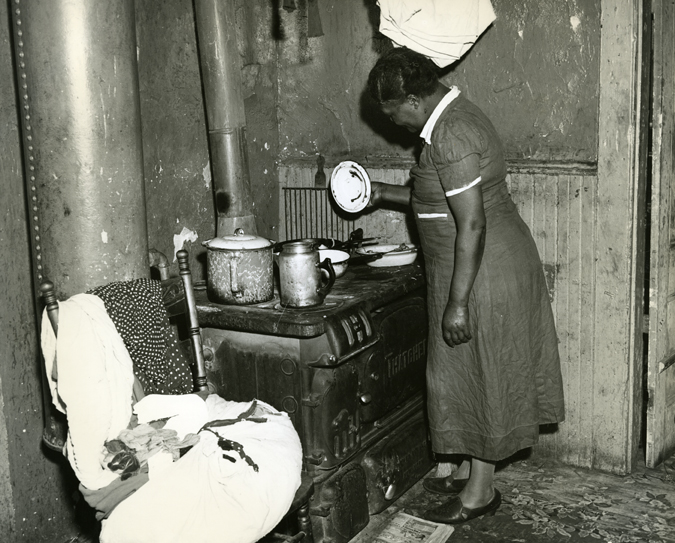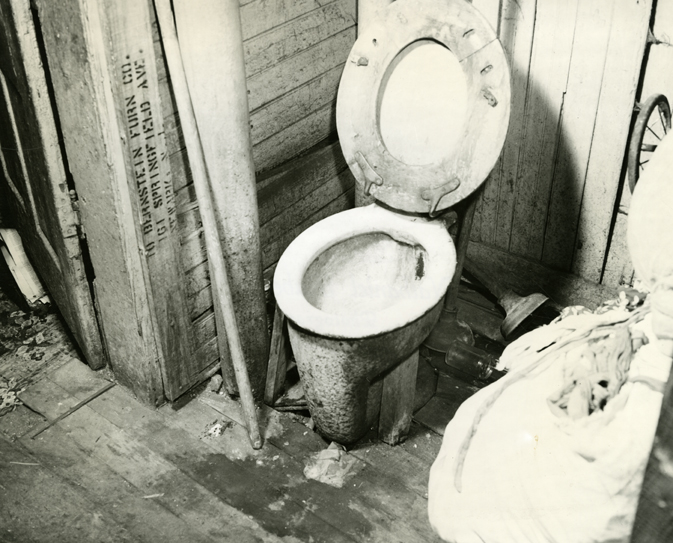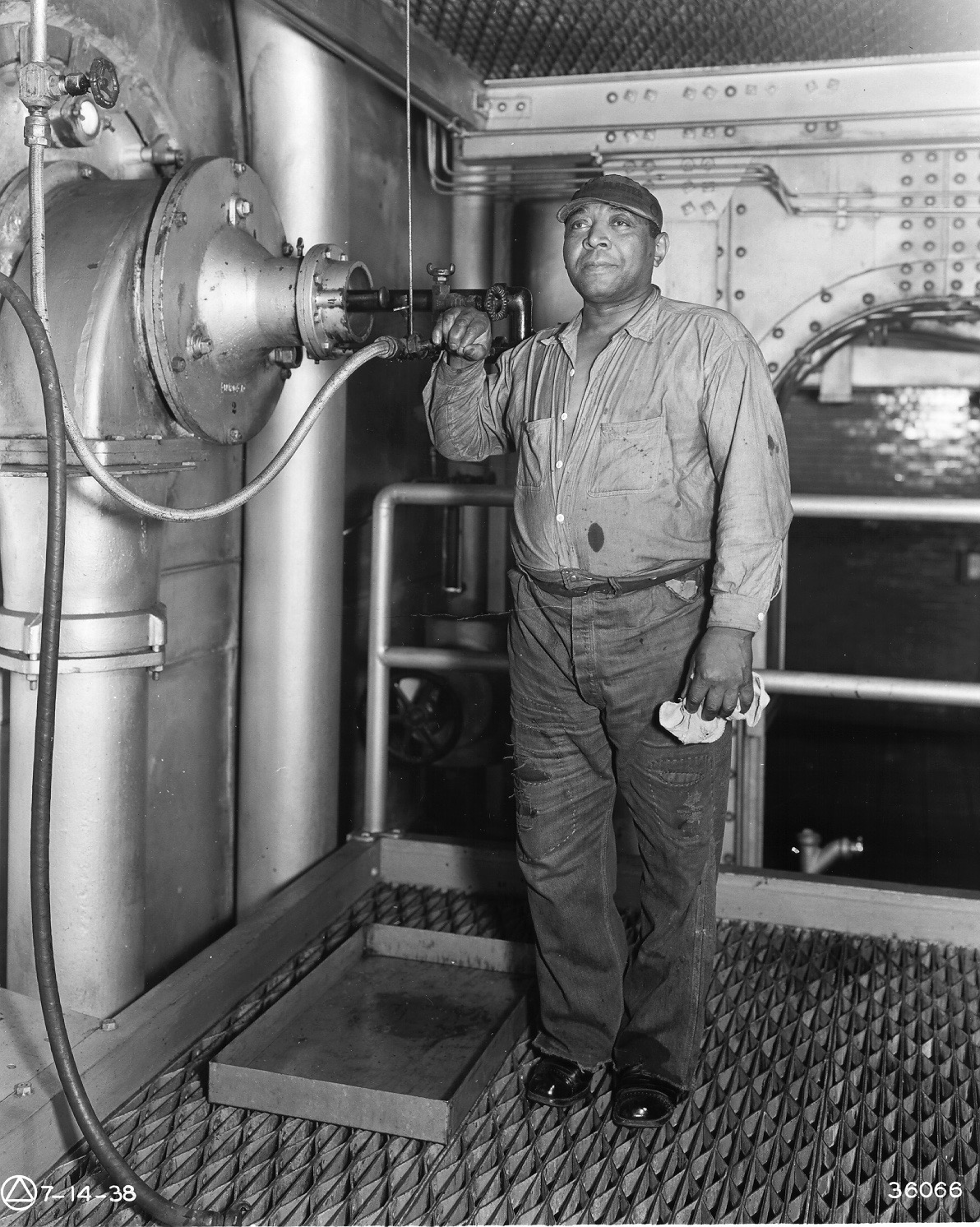Bessie Smith
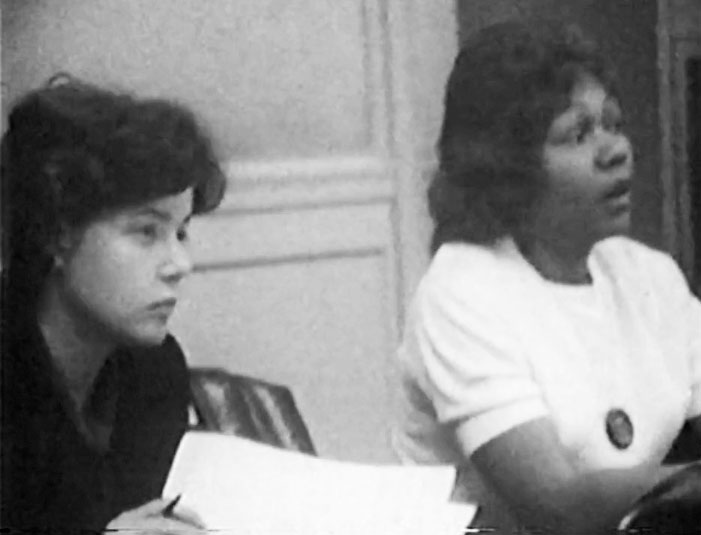
Bessie Smith came to Newark, NJ from New York City. She married Thurman Smith, a musician and photographer, and together they had two children, Connie and Michael. They bought a modest house at 61 Hillside Avenue in the Clinton Hill neighborhood.
Bessie and Thurman helped to found the Newark Community Union Project (NCUP), working with organizers who came from Students for a Democratic Society (SDS), and other neighborhood people. In the summer of 1964, SDS members began arriving in Newark with the goal of building an “interracial movement of the poor.” The organization focused on organizing around issues of concern to the community including police brutality, housing, public safety, education and welfare. “I think NCUP means that people can get together…with other people and they don’t have to feel inferior or feel ashamed because maybe they don’t know how to speak well,” Bessie Smith said in an interview. “People don’t feel that they are looked down on the way they feel if they go to an NAACP meeting.”
When the federal anti-poverty program came to Newark, in the form of the United Community Corporation (UCC), community boards were established. Bessie’s intelligence, commitment, and leadership were recognized when she was elected president of Area Board #3 in lower Clinton Hill. In this position she provided guidance and support to community members organizing to bring change to this deteriorating neighborhood and represented them in the city wide anti-poverty organization.
As president of Area Board #3, also known as the People’s Action Group, Bessie fought against city officials to ensure that poor members of the community were represented in the poverty program’s administration. “The anti-poverty program should be worked by the poor people,” she wrote in a statement to a Congressional Committee investigating the War on Poverty in 1965. “We truly believe that this is the only way we can get to the bottom of poverty.”
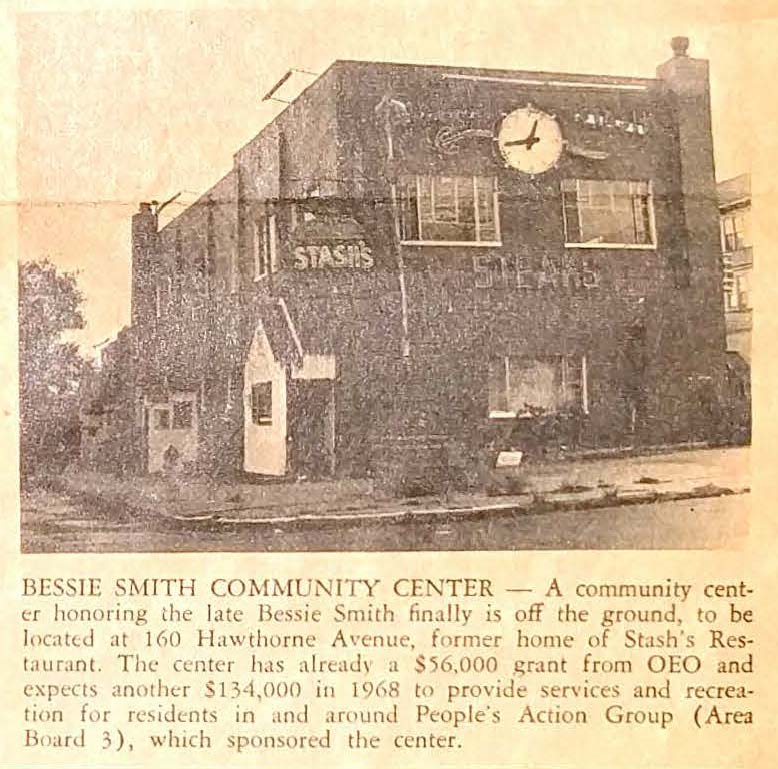
Bessie Smith was the type of community organizer that southern civil rights workers called an “indigenous leader,” meaning a local person with natural leadership skills. Bessie and Thurman Smith regularly used their home on Hillside Avenue as a space for hosting community meetings. NCUP member Carol Glassman reported on one of the first times Bessie Smith went out organizing door-to-door in her neighborhood: “Bessie is almost middle class compared to the people on Peshine and yet she gets along really fine with them, they are relaxed and they really like her.”
Sadly, Bessie Smith died in her sleep shortly after her election. In her honor, in 1968 a community center established in Clinton Hill was called the Bessie Smith Community Center. Phil Hutchings, former NCUP member and national chairman of the Student Nonviolent Coordinating Committee (SNCC), later said that Bessie Smith “was our version of Fannie Lou Hamer.”
References:
Reminiscences of Carol Glassman, 2017.
Newark Community Union Project Member Report of Carol Glassman, June 18, 1965.
“The War on Poverty in Newark, NJ,” statements presented to Adam Clayton Powell’s Congressional Committee, April 1965.
Phil Hutchings oral history interview conducted by Joseph Mosnier, 2011.
Clip from the film “Troublemakers” with footage of a meeting of Area Board #3 of the United Community Corporation (UCC). Carol Glassman and Bessie Smith, UCC and NCUP members, are shown leading the meeting from the table at the front of the room, while Jesse Allen can be seen standing and moderating comments. — Credit: Robert Machover
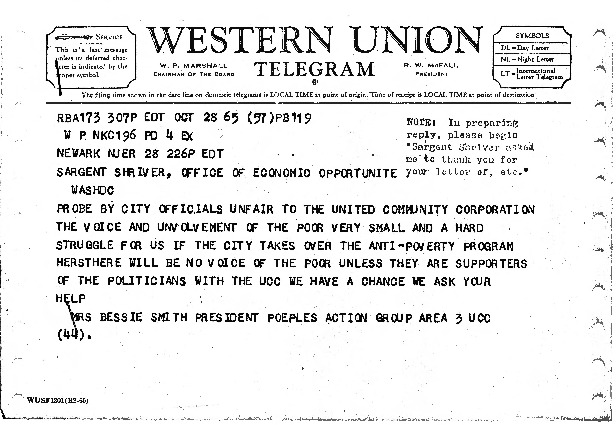
Telegram from Bessie Smith to Sargent Shriver, Director of the Office of Economic Opportunity on October 28, 1965. Mrs. Smith sent the telegram to request Shriver’s assistance in response to the City Council Committee’s investigation of the UCC. — Credit: Junius Williams Collection
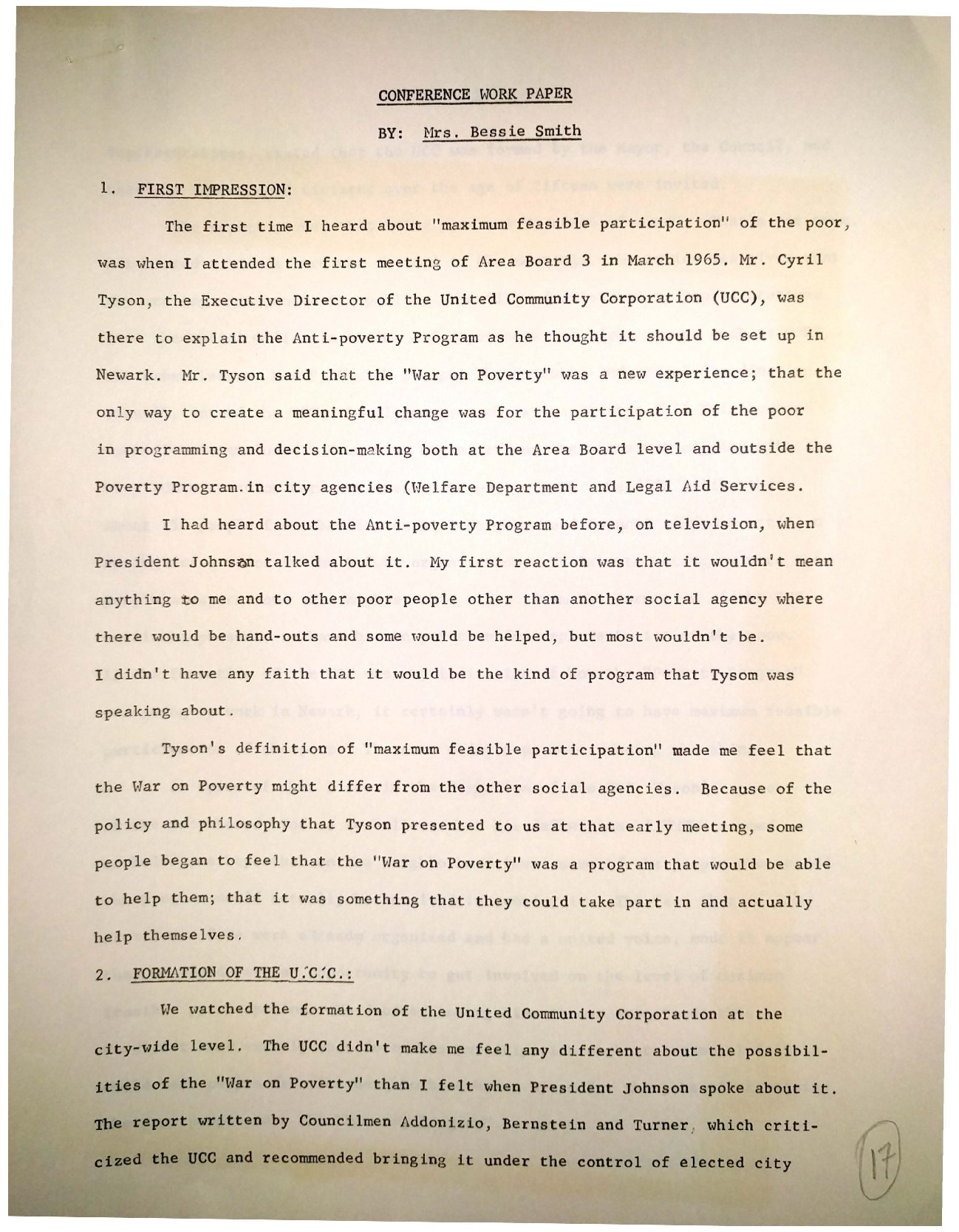
Conference paper prepared by Bessie Smith regarding “maximum feasible participation” of the poor in War on Poverty efforts in Newark. In the paper, Mrs. Smith describes the struggles for community control of the United Community Corporation, Newark’s Community Action Agency for War on Poverty funding. — Credit: Newark Public Library

